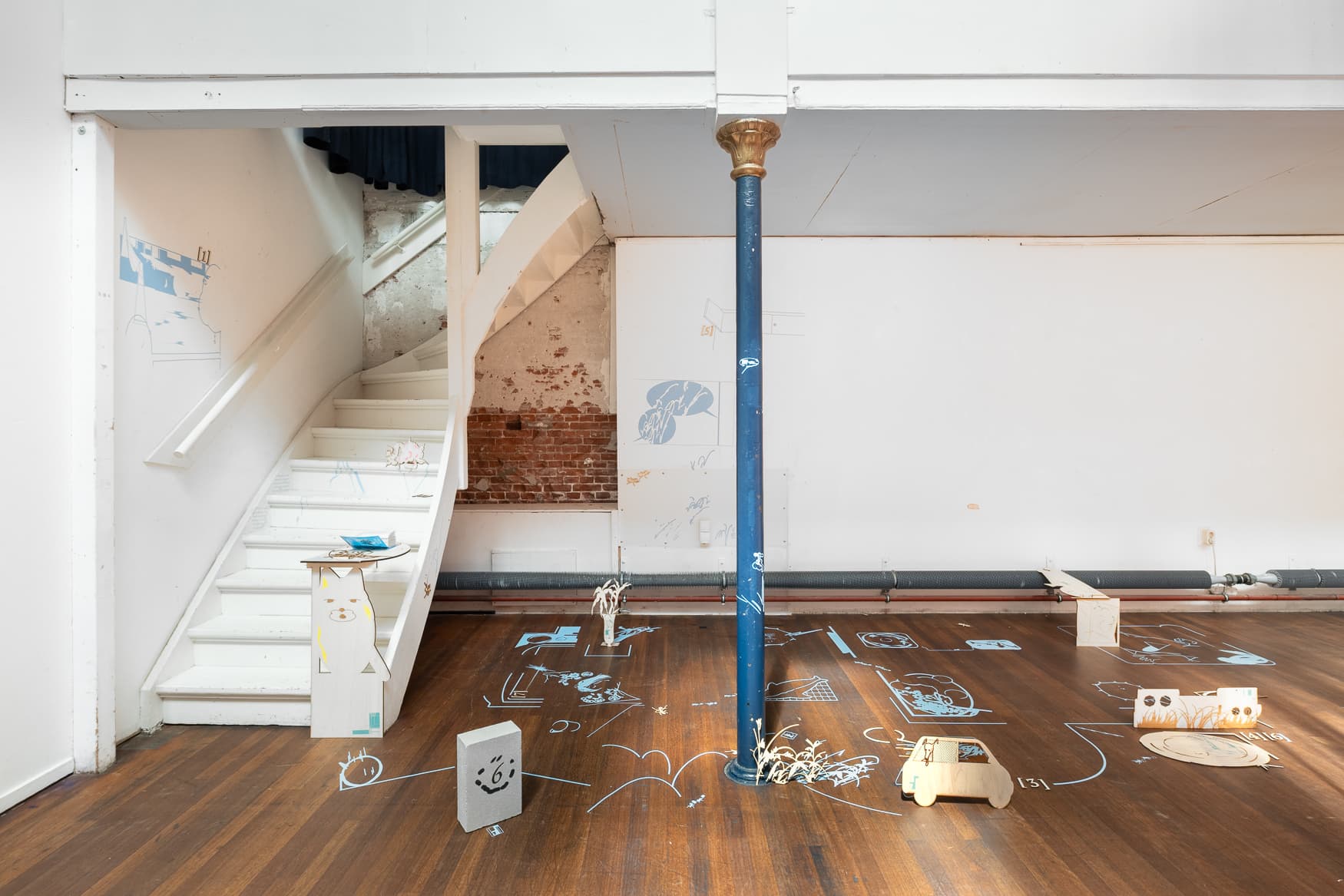Jingran
Design
Biography
Jingran He is a designer passionate about graphic design, text, comics, and cats. Born in China and based in Amsterdam, she has yet to decide where the future will lead. Always on the move, she studies small gestures that trace life, unfolding stories to explore the relationship between the personal and the historical—seeking a more intimate position within it.

Pretty home, if ever, hand over the key
This work is a site-specific graphic memoir that unfolds the traces of a family’s mobility. The imprints of life and family memories appear scattered throughout the exhibition space in the form of floorplan — reconstructing different homes that the designer used to live in while simultaneously creating a present "site of remembrance." Here, the interiors of these various homes are shaped not by objects, but by stories. Through visual and textual language, both in the comic and in the exhibition space’s floor, the work opens a portal for wandering through a memory-space layered with recollections and anecdotes that linger amid collapsing and change. The submerged and forgotten narratives within the ever-changing urban and rural landscapes in the wake of modernization in China are reclaimed through this process The graphic memoir, sized like a 6-inch photo album, serves as both an entry ticket and a passport into this constructed "domestic space." Visitors are invited to hold the book in hand as a guide, navigating the exhibition by reading the dialogues and stories while walking to their corresponding locations, where the broader environmental context unfolds around them. This act of moving through space becomes a metaphor: in motion, it reflects the tension between personal memory and collective history, revealing how personal life unfolds as a small annotation within larger historical periods — and how intimate stories can find space to expand within the cracks of grander historical narratives. In response to the dispersal and fluidity of contemporary life, this work proposes a way of thinking: that the graphic memoir might serve as a methodology — a tool for recording and preserving everyday life in a habitual, accessible way. Especially in an era where demolition and reconstruction have become routine, and the act of "refreshing" spaces is normalized, it invites us, as individuals, to resist “forgetting “ and recognize that our small personal histories are worth remembering, documenting, and preserving.
